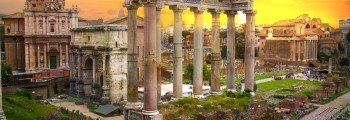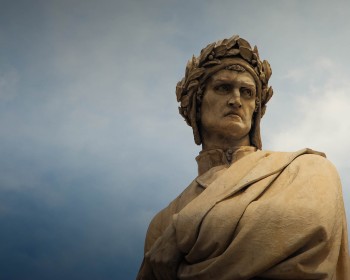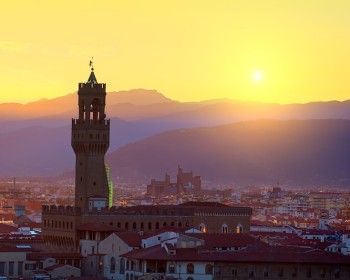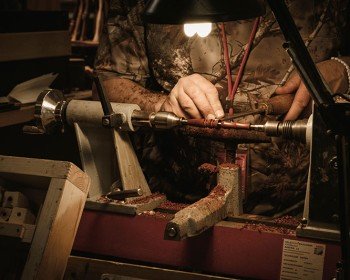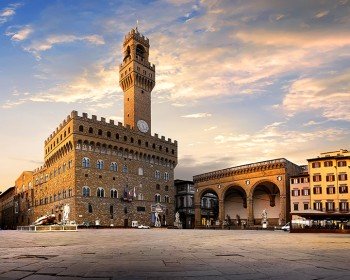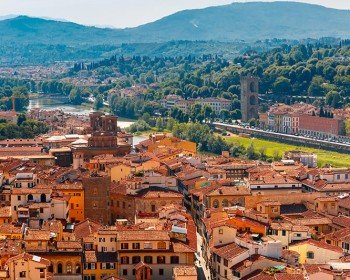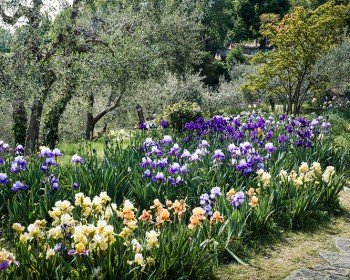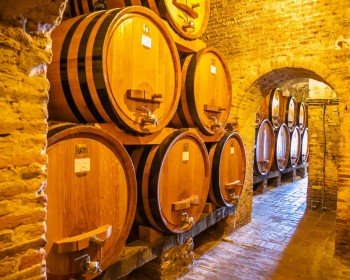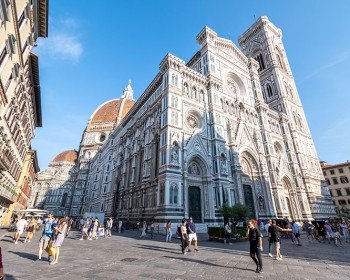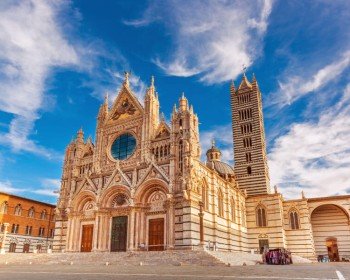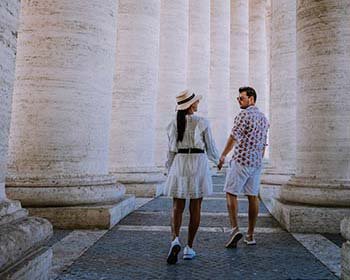Just as any treasures, the Uffizi Gallery in Florence only unveils after you have completed many hard tasks. You have to pass through the hussle at the entrance, identify the right queue and access door, walk up 141 stairs to reach the second floor… and then the amazing ceilings with their frescoes will unveil in front of you, together with a labirinth of rooms with the most impressive works of art.
The history of the Uffizi Gallery in Florence
Uffizi Museum in Florence was not built to host 10,000 people every day. It was just as a space for offices, a theatre and top secret rooms carefully guarded by the Grand Dukes of the Medici family. Its construction started in 1560, led by artist Giorgio Vasari. He created the Gallery developing a brilliant design to enhance the beauty of Palazzo Vecchio’s Tower.
The Medici Family had been developing private collections for ages, but the idea of a huge space to host wonders of all kind was brought forward by Francis I Medici. He had a small octagonal heart built inside the Gallery, as well as a small casket, the Tribuna. Sculptures, cameos, books, paintings, coins, armors and many other items were re-organized only by Pietro Leopoldo of Lorena. It was him who opened the Uffizi Gallery in Florence in 1769. Of course he could not have possibly known that one day this Gallery would be one of the most visited museums in the world.
The Collection inside the Uffizi Gallery in Florence
When you enter the Sala dei Primitivi (Halls of the Primitives) you are welcomed by three enormous wood canvas painted by Giotto, Duccio and Cimabue in the 14th century. They are among the biggest works of their kind to have survived until now. When you exit this hall, head to the room on your right and leap into the 15th century. Spears painted by Paolo Uccello, the beautiful Madonna by Masaccio and the amazing double portrait of the Duke and Duchess of Urbino by Piero Della Francesca will leave you speechless.
When walking through the halls look for the sly look of a Carmelitan friar and savour the beauty of the “Lippina“, a masterpiece by the painter and friar Filippo Lippi. More amazing female portraits await you: the “Birth of Venus” and the “Allegory of Spring“, by Sandro Botticelli, which are among the finest pictures ever. Take a deep breath, because the next room is one of the most crowded! This is where you can admire the only painting by Leonardo da Vinci in the Uffizi Gallery, “Annunciation“, which he made in his early years. Now take a walk along the corridor of the lodge and fill your eyes with an incredible 180° degrees view on the hills of Saint Miniato, the Bardini and Boboli gardens and the famous Old Bridge.
Do you think you’ve seen it all? Well, you’ve just covered one quarter of the museums! You still have to see the “Doni Tondo“, a holy family by Michelangelo, a long corridor full of ellenistic statues, the rooms of the Manneristic painters, Bronzino, Raphael and the new rooms dedicated to Correggio, Titian and Parmigianino.
Vasari Corridor in the Uffizi Gallery in Florence
This long corridor, which is built over the Old Bridge, connects Palazzo Vecchio (Old Palace) and the Uffizi Gallery to Pitti Palace. Half a mile long, this passage was commissioned by Cosimo I Medici to Vasari in 1565, to celebrate his son’s wedding. It was particularly useful as it let them move from the Governance Palace, Palazzo Vecchio, to their residence, Pitti Palace, without having to walk throught the streets of Florence. From the windows of the Corridor you can enjoy wonderful views over Florence and you immediately understand its peculiarity: from the Corridor you can see people outside but no one can see you! The Corridor also hosts exstraordinary portraits dating back from the 17th to the 20th century.


